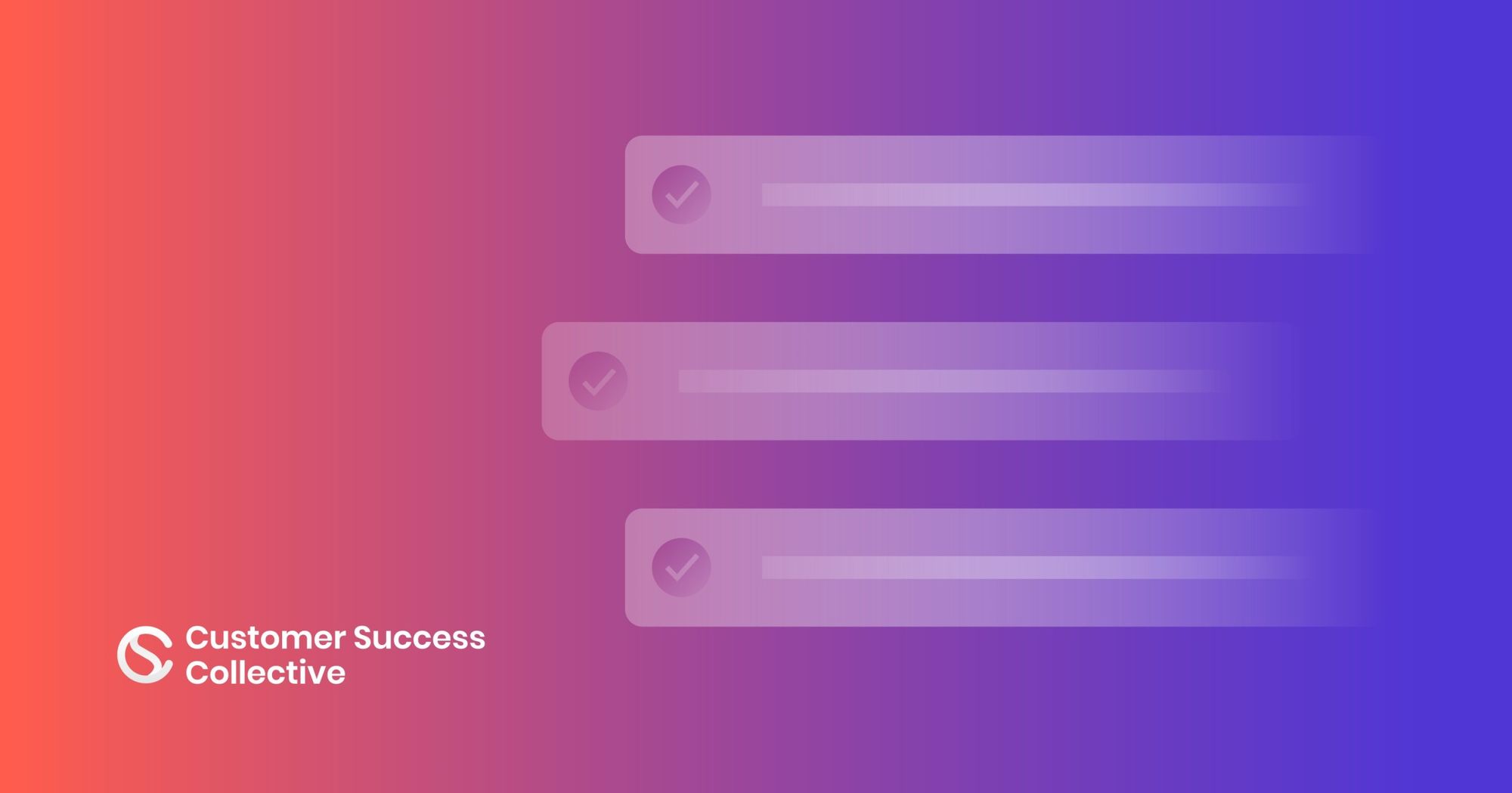This article has been transcribed from a presentation at October 2022's virtual Customer Success Festival.
In this article, Mike Lee, Director of Customer Success at PublicInput, and Swati Chopra, Snr. Director of Customer Success, Support & Strategy at DocuSign, talk about why you need to optimize your onboarding process. They specifically look at:
- The importance of good onboarding
- How to plan a successful onboarding experience
- Involving the right stakeholders in your onboarding process and holding them accountable
- Celebrating early wins as a springboard for upsells
The importance of good onboarding
Swati Chopra: So Mike, you and I both know how important onboarding is for companies. If we don't do onboarding right, the entire journey is impacted. I’ve seen it in almost all the companies I've done customer success in – and small-scale, mid-scale, and even large companies like Cisco, and that’s why each of these companies has such a deep focus on customer success and onboarding.
Mike Lee: Absolutely. Early engagement in onboarding is extremely important. When a customer buys your product, one of the things you have to understand is if they know how to use it. Sometimes the people who are buying the product, the sponsors, may purchase it because it's a good idea, but that's all the communication that they have with their teams. The teams may be thinking, “How in the world do I use this tool?”
If we can get off to the right start in the customers’ journey, it totally changes the trajectory. If the product’s not being used and the customers don’t understand it, that completely changes how we engage them even on the customer success side. We can find ourselves doing a lot of training and hand-holding and so forth.

How to plan a successful onboarding experience
Mike Lee: To optimize our onboarding experience here at PublicInput, we’ve started asking ourselves if our customers understand what needs to be in place to even start onboarding, what type of organizational change needs to happen, and what kind of strategy they need to have.
Since we started asking those questions, the change has been incredible. Our customers are going into onboarding with a plan and an understanding of how to achieve value. They're also starting to understand how to take advantage of the training programs that we have.
Having that initial understanding of what to do with a product, especially a SaaS product that could be intimidating to customers, is extremely important in onboarding and early engagements. Have you experienced the same thing, Swati?
Swati Chopra: Exactly. I totally agree with you on this. When we start on our customer success journey, in the onboarding stage, the first thing is to define and create success plans for the customer. We should not have that engagement after the sale, but we should start having that conversation before the sale.
A Customer Success Manager (CSM) needs to understand the goal for which the customer is purchasing that product or service. What is the North Star for them in terms of that product or service? What use cases do they want to drive? Sometimes, as you said, they're not even aware of the use cases, so we need to help them understand how they get the benefit and the return on investment out of that product.
Once we’ve built that success plan around the customer’s goals and showcased it to the customer, there’s a clear agreement on where we are going to be three months, six months, and nine months into the cycle. There are clearly defined milestones to drive in each stage of the success plan. That plan keeps us on track.
We can also monitor our progress and course-correct our success plan based on changing priorities on the customer side and any new product features, enhancements, or upgrades. We can always tweak that success plan.

Involving the right stakeholders in your onboarding process and holding them accountable
Swati Chopra: Another very important thing is who participates in the onboarding. On our side, we do an internal onboarding meeting before we start the external onboarding. We get our CSMs, sales reps, implementation engineers, and technical account managers together to understand the customer’s use cases, the scope of work they’re looking at, and that organization’s footprint. Then we have an external onboarding call where we align with the customer and their team.
It’s extremely important to have the right people involved from the customer side too. I’ve often seen that if you don't have the right people, your onboarding experience can be very different. You may have decision-makers in a meeting solely about implementation, and that's not the right audience for that kind of meeting.
As a CSM, you have to clearly define the cadence for your meetings and which stakeholders need to be involved. For example, if we are talking about our success plans as part of the initial onboarding, yes, the decision-makers and implementers from the customer side should be part of that meeting; everybody needs to see the big picture. This is the blueprint for where we are going, and we need to make sure that everyone aligns with that blueprint.
Once we know the path we have to follow, however, it makes more sense to have the admins and the people who will be monitoring and maintaining the solution involved in our regular meetings. For the senior stakeholders, we should have a periodic cadence, not a weekly cadence, where we can show them the milestones we’ve hit and demonstrate the return on their investment. That's what’s valuable to them.
Having that differentiation between your target audiences and the kind of material you're going to discuss with them is also key to having a successful customer journey. Have you seen similar things on your side of the house?
Mike Lee: I sure have. Absolutely. I like what you said about cadences. I think cadences are really important, especially in early engagements like onboarding, because they keep people accountable. When we establish that we're going to be meeting at a certain pace, you're going to be responsible for doing this by this date, and we're going to check in on it, that keeps people on track.
Our customers are all busy, and there are a hundred other vendors doing customer success and onboarding, but if you set the schedule, and you keep that importance in the front of your mind, that cadence really does hold the customer accountable for achieving the goals they're trying to achieve.
However, you can’t just meet for the sake of meeting, especially in onboarding. We don't want to do that in customer success in general, but in onboarding in particular, it’s essential that every single meeting has some sort of value or outcome associated with it that gets our customers a little closer to their goal. In order to do that, you have to strategically plan out your engagement.

Celebrating early wins as a springboard for upsells
Mike Lee: Once you've established that meeting cadence and you’ve started accomplishing goals and milestones, you have to celebrate those wins, and you have to celebrate them in a very thoughtful manner. You want to make sure that they know and that their leadership understands that they've been successful. You want to figure out a way to show that so that they continue to move forward.
Do you celebrate early achievements with your customers, and how do you recognize them?
Swati Chopra: Definitely. We look at the success plan as a whole, which has milestones that we’ll achieve within certain time frames provided that our resources are working together with the customer’s resources. When you start achieving those milestones, the journey becomes even easier because you've started showing them the results. You’ve started celebrating those wins, as you mentioned so rightfully.
You haven’t gone through the entire customer success lifecycle yet, but as a CSM, you can now start introducing upsell and cross-sell opportunities even within the onboarding stage because the customer is already seeing wins. You can jump in and say, “This is what you're getting with your purchase now; think about what you can achieve with all the other things that are available.”
I was really surprised when I first saw some of my CSMs going for an upsell right at the beginning of the cycle, but the customers were all in because they were happy with the momentum they had and they didn't want to lose that momentum. That's one of the things that has come out of celebrating those early wins.
Have you had any similar experiences on your side of the house?
Mike Lee: Absolutely. As a CSM, I used to work towards those upsells, especially with early customers – those are the ripest opportunities for that. What I've learned is when you celebrate those early wins, you show the value that the customer has found in your product early on, and as you said, that's the time you do the upsells.
The reason for that is – and I firmly believe this – if a customer doesn’t see the value in the level of service that they've already purchased, they're not going to want to upgrade to anything. To introduce an upsell, you have to have shown that what they've purchased provides them with some sort of return on investment. If you haven't had that conversation and celebrated those wins, that upsell isn’t going to happen and it may not happen for a very long time.
To come full circle back to the importance of onboarding, those initial engagements are really important for getting the customer to a place where, even if they don't see the value just yet, they see a light at the end of the tunnel. They understand what's coming and what's possible with your tool.
If you can get your customer to understand what’s possible or even feel the value or the return on investment quickly, that upsell, those upgrades, those contract uplifts, and even referrals to new customers are going to come much more easily. Onboarding is the key to that.
If you don't get your onboarding right, and they don't at least see how this tool can change their lives or help make their work lives better, you've lost that conversation, at least until you can prove that value. That's why onboarding is so important.
It's so interesting to me as a leader that we can make really big changes to the customer lifetime value just in our onboarding program very early on. That’s what’s exciting to me.

TL;DR: Good onboarding is vital
Swati Chopra: There's so much more we could talk about when it comes to onboarding and upsells, but let’s round up our conversation with some of the best practices we’ve discussed.
- The onboarding experience starts even before customers sign the contract, so CSMs should engage with customers before the signing of the contract too.
- Once the contract is signed, ensure that you have internal and external stakeholders aligned.
- Create a success plan with key milestones documented in it.
- Define the use cases for which the customer has purchased the product.
- As you move forward with onboarding, set up the right cadence with your internal stakeholders, your external stakeholders, and the decision-makers.
- Celebrate early success.
- Look out for thoughtful upsell opportunities.
Onboarding playbook
This playbook will be your new best friend if you want to know:
⛵ What customer onboarding actually is
🔥 The steps to take before the prospect converts
💰 How and when to identify revenue opportunities
🧠 The best way to reflect on your process and measure success
So if you don’t want your customers becoming disengaged and unsubscribing, download your free copy of our playbook and discover how to onboard your customers properly.
After all, you wanna make sure they realize the full value of your product, right?



 Follow us on LinkedIn
Follow us on LinkedIn




